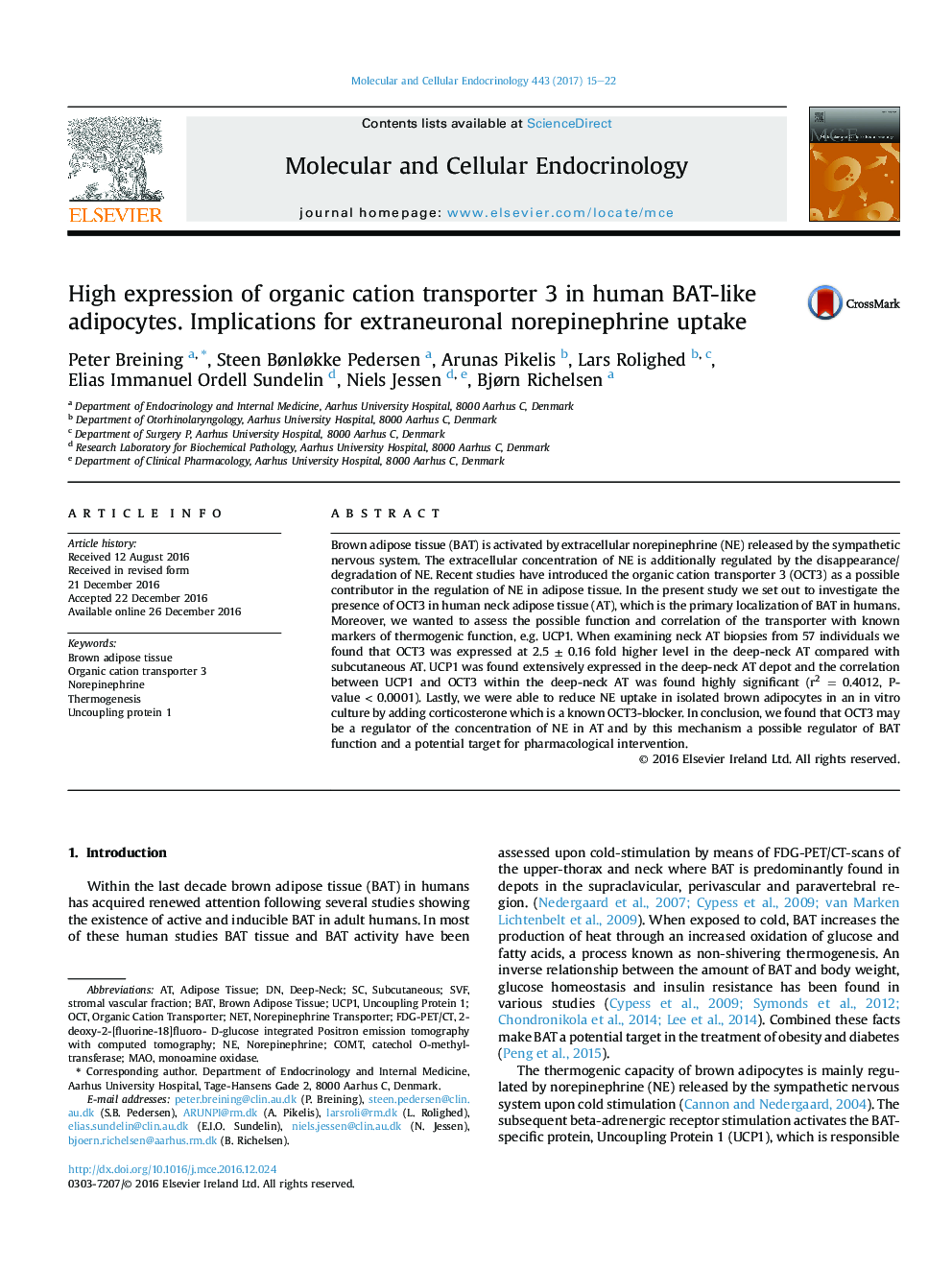| کد مقاله | کد نشریه | سال انتشار | مقاله انگلیسی | نسخه تمام متن |
|---|---|---|---|---|
| 5534189 | 1550836 | 2017 | 8 صفحه PDF | دانلود رایگان |

- The Organic Cation Transporter 3 (OCT3) is highly present in human adipose tissue.
- The OCT3 is a known regulator of non-neuronal norepinephrine cellular uptake.
- OCT3 strongly correlates with UCP1 expression in human deep neck adipose tissue.
- Selective OCT3 blockage reduces norepinephrine uptake in isolated brown adipocytes.
- Thus, OCT3 may be of importance for regulation of BAT activity.
Brown adipose tissue (BAT) is activated by extracellular norepinephrine (NE) released by the sympathetic nervous system. The extracellular concentration of NE is additionally regulated by the disappearance/degradation of NE. Recent studies have introduced the organic cation transporter 3 (OCT3) as a possible contributor in the regulation of NE in adipose tissue. In the present study we set out to investigate the presence of OCT3 in human neck adipose tissue (AT), which is the primary localization of BAT in humans. Moreover, we wanted to assess the possible function and correlation of the transporter with known markers of thermogenic function, e.g. UCP1. When examining neck AT biopsies from 57 individuals we found that OCT3 was expressed at 2.5 ± 0.16 fold higher level in the deep-neck AT compared with subcutaneous AT. UCP1 was found extensively expressed in the deep-neck AT depot and the correlation between UCP1 and OCT3 within the deep-neck AT was found highly significant (r2 = 0.4012, P-value < 0.0001). Lastly, we were able to reduce NE uptake in isolated brown adipocytes in an in vitro culture by adding corticosterone which is a known OCT3-blocker. In conclusion, we found that OCT3 may be a regulator of the concentration of NE in AT and by this mechanism a possible regulator of BAT function and a potential target for pharmacological intervention.
Journal: Molecular and Cellular Endocrinology - Volume 443, 5 March 2017, Pages 15-22